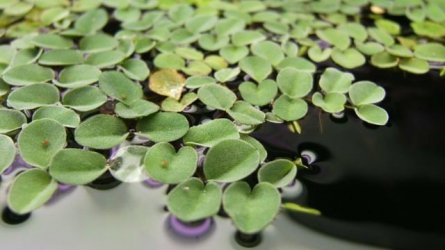joelfernandes
Fish Fanatic
Hello all.
I'm new to the hobby and got a shot at plants, but starting with floating plants as these seem much easier to succeed for a newbie like myself.
I have two tanks, a 29-gallon (6 guppies + 2 mollies + 2 neon tetras + 1 small angelfish), and a 10-gallon one (2 mollies + 3 swordtails + 1 guppy). A few weeks ago, I got some duckweed that I first placed in the bigger tank as I was still going through the cycle. Eventually, I took a little bit of it and put it in the smaller tank.
A few weeks later, I noticed that the duckweed in the bigger tank was turning red and not growing much (especially considering it is duckweed), whereas the one in the 10-gallon tank did grow quite a lot (I would say at least 4x more than what was it when it started). Some pictures below.
It's worth saying that the bigger tanks have a hang-on-back filter, and I had the duckweed constantly getting submerged with the flow of the water. But I printed some feeding rings, and they've been there for more than a week now, but still not much of an improvement. Both tanks have a lid.
What's going on with the bigger tank?


I'm new to the hobby and got a shot at plants, but starting with floating plants as these seem much easier to succeed for a newbie like myself.
I have two tanks, a 29-gallon (6 guppies + 2 mollies + 2 neon tetras + 1 small angelfish), and a 10-gallon one (2 mollies + 3 swordtails + 1 guppy). A few weeks ago, I got some duckweed that I first placed in the bigger tank as I was still going through the cycle. Eventually, I took a little bit of it and put it in the smaller tank.
A few weeks later, I noticed that the duckweed in the bigger tank was turning red and not growing much (especially considering it is duckweed), whereas the one in the 10-gallon tank did grow quite a lot (I would say at least 4x more than what was it when it started). Some pictures below.
It's worth saying that the bigger tanks have a hang-on-back filter, and I had the duckweed constantly getting submerged with the flow of the water. But I printed some feeding rings, and they've been there for more than a week now, but still not much of an improvement. Both tanks have a lid.
What's going on with the bigger tank?







